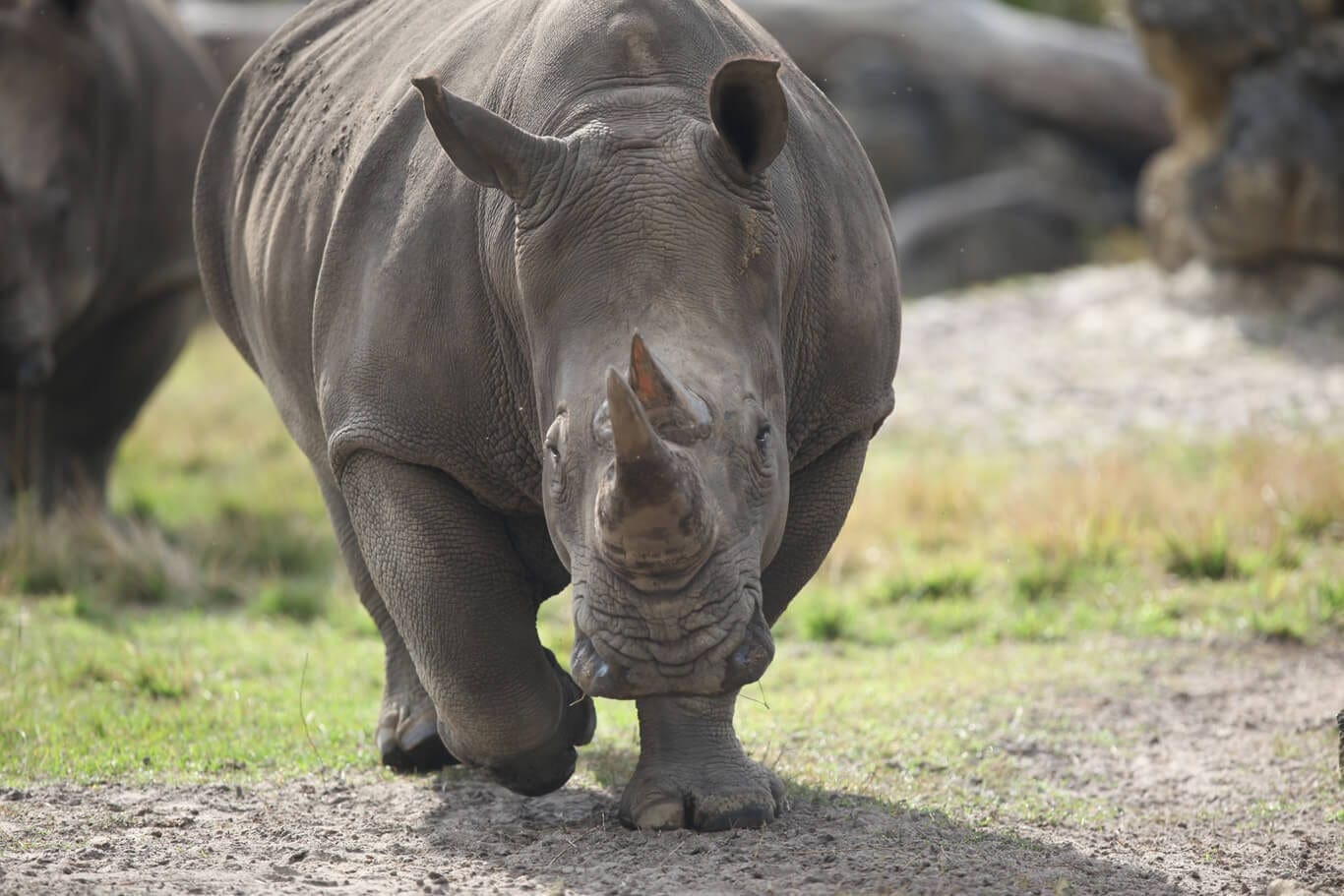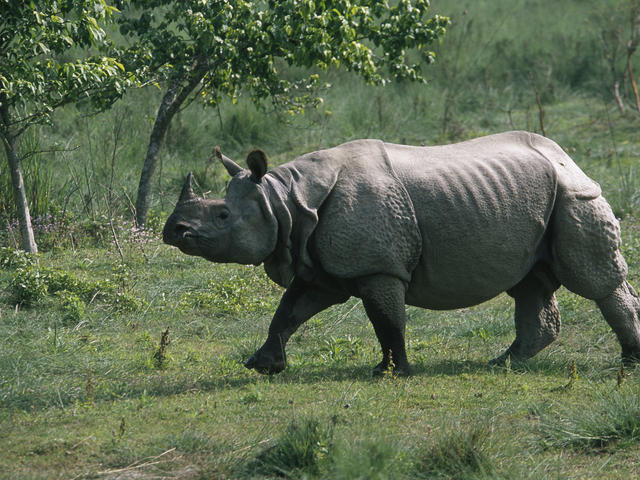
Just as she is ready to give birth, the cow will find a solitary, quiet space to calve Gestation period: this is between 15-16 months.There is no set breeding season, and a female will leave a gap of around 3-4 years between calves Sexual maturity: females may begin breeding at 4 years old, and males are usually sexually mature at 9 years old.By continuing to walk, they ‘transport’ their own smell around the paths, thus establishing a scent-marked trail that is claimed by the rhino in question After defecating, Greater one-horned rhinos scratch their hind feet in the dung. Such a dung heap can become up to five metres wide and one metre high. Several animals often defecate at the same spot. Scent-marking: rhino dung heaps, or ‘middens’, serve as communication points and mark territorial boundaries.Female territory: these tend to overlap with other territories, and also depend on the resources available in a particular area.The death of one male in one of these fights is not uncommon it’s usually a few days later, due to wounds sustained during the fight Male territory: male Greater one-horned rhinos fight violently for preferred habitual areas.If food is abundant within an area, it is not unusual to see several animals all grazing close together The females can move in and out of these territories as they like. The territories change according to food availability in relation to the current season. Males have loosely defined territories where they live alone, which they defend aggressively, and this may overlap with other territories. Sociability: Greater one-horned rhinos are usually solitary, except for females with small calves.Habitat: Greater one-horned rhinos are semi-aquatic and often take up residence in swamps, forests and riversides, and anywhere that is near nutritious mineral licks.In the past, Greater one-horned rhinos roamed freely in the floodplains and forests alongside the Brahmaputra, Ganges and Indus River valley Location: the Greater one-horned rhino can be found in India and Nepal, particularly in the foothills of the Himalayas.Hair: found at the tip of the tail, around the ears and eyelashes.It is not used for fighting but to search for food and to forage for roots It has the same horn structure as the hooves of horses, and re-grows if broken off. The horn: Greater one-horned rhinos have one horn, which is typically 20-61 cm long, and weighs up to 3 kg.
Rhinoceros height and weight skin#
Between the folds, around the stomach, the inner legs and the facial area, the skin is rather soft and thin The subcutaneous fat is 2-5 cm thick and well supplied with blood this helps thermo-regulation, meaning that the animal is able to regulate its own body temperature in varying weather conditions. The skin has a maximum thickness of 4 cm. Several prominent folds of skin protect the neck.

With strict protection from Indian and Nepalese wildlife authorities, Greater one-horned rhino numbers have recovered from under 200 last century to around 4,000 today. The remaining animals were only found in protected reserves, where, under the monitoring of certain organisations, populations are currently being brought back from the edge of extinction. In the early 19th century, the Greater one-horned rhino was almost hunted to extinction. For centuries, rhinos have been hunted for sport and for their horn. The biggest threat that Greater one-horned rhinos face is human harassment and encroachment.

Scientific name: Rhinoceros unicornis, ‘uni’ meaning one and ‘cornis’ meaning horn in Latin.


 0 kommentar(er)
0 kommentar(er)
